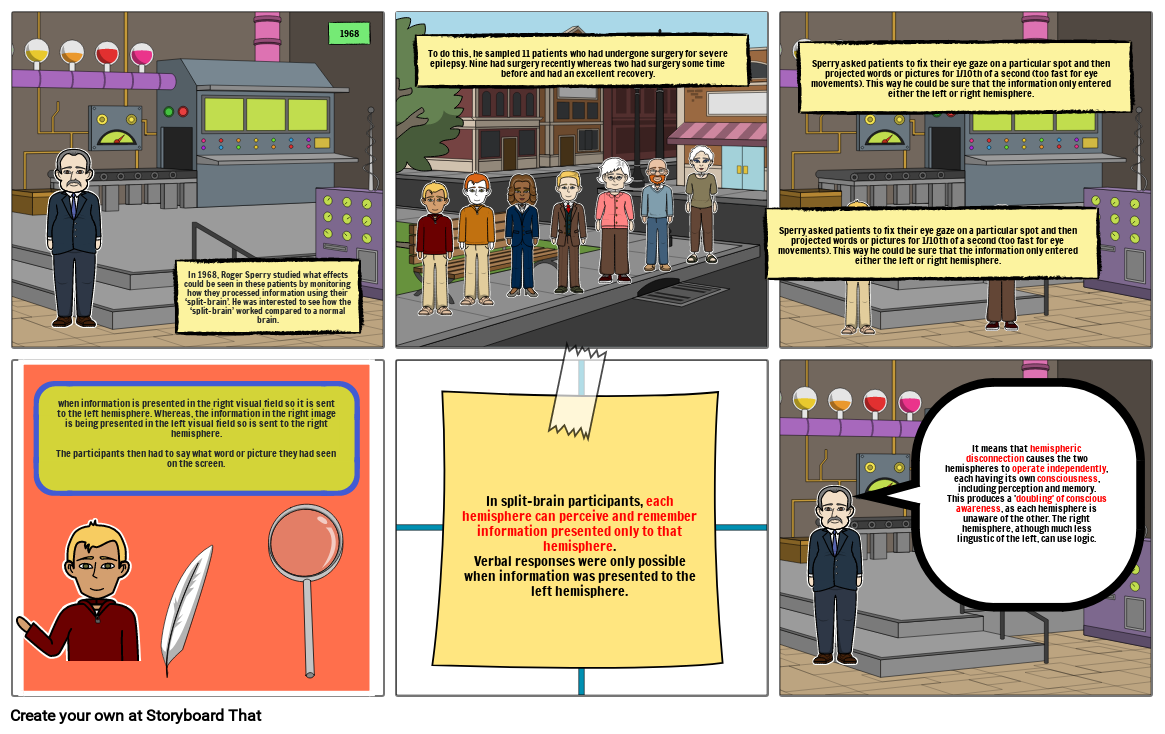sperry

Texto do Storyboard
- In 1968, Roger Sperry studied what effects could be seen in these patients by monitoring how they processed information using their ‘split-brain’. He was interested to see how the ‘split-brain’ worked compared to a normal brain.
- 1968
- To do this, he sampled 11 patients who had undergone surgery for severe epilepsy. Nine had surgery recently whereas two had surgery some time before and had an excellent recovery.
- In split-brain participants, each hemisphere can perceive and remember information presented only to that hemisphere.Verbal responses were only possible when information was presented to the left hemisphere.
- Sperry asked patients to fix their eye gaze on a particular spot and then projected words or pictures for 1/10th of a second (too fast for eye movements). This way he could be sure that the information only entered either the left or right hemisphere.
- Sperry asked patients to fix their eye gaze on a particular spot and then projected words or pictures for 1/10th of a second (too fast for eye movements). This way he could be sure that the information only entered either the left or right hemisphere.
- when information is presented in the right visual field so it is sent to the left hemisphere. Whereas, the information in the right image is being presented in the left visual field so is sent to the right hemisphere.The participants then had to say what word or picture they had seen on the screen.
- It means that hemispheric disconnection causes the two hemispheres to operate independently, each having its own consciousness, including perception and memory. This produces a 'doubling' of conscious awareness, as each hemisphere is unaware of the other. The right hemisphere, athough much less lingustic of the left, can use logic.
Mais de 30 milhões de storyboards criados

